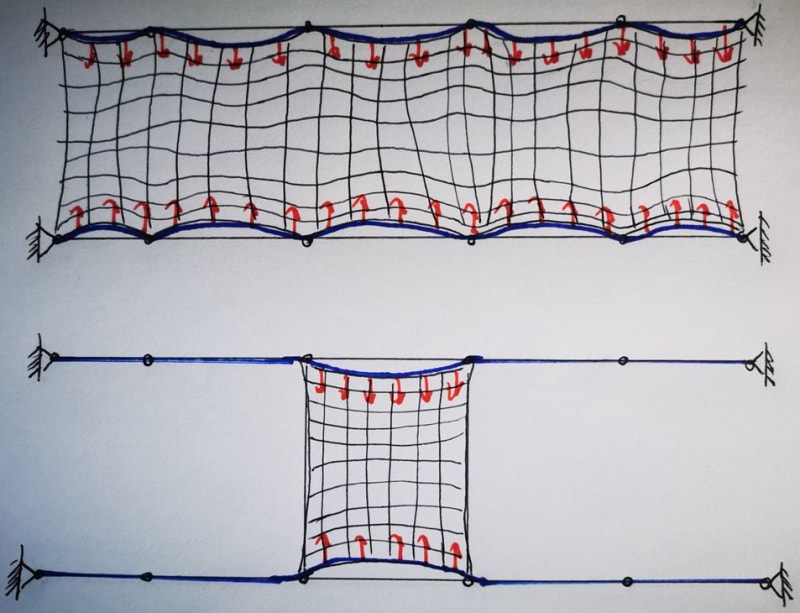Hi all - Developing concepts for a walk on tension access platform. When the walk on net is held taught to limit sagging (both SW and service loads) it produces a lateral load each side and in my case the net is restrained along two parallel sides. The net hooks on to parallel straining wires that are pre-tensioned wire ropes. The below sketch illustrates the concept - blue are the wire ropes (deflections exaggerated) and the red UDL's represent the net lateral pull and for this purpose can be considered equal full length in both diagrams. The intermediate supports allow the ropes to slide and rotate freely so they 'guide' and only provide vertical and lateral restraint when rope equilibrium is found. I am wanting to minimize the quantity of intermediate fixings (increase crs) but this is having a significant increase in the rope tension and size required in order to control deflections. Fundamentally I had wanted to ask whether it is correct to assume the tension in the rope is a multiple of the tension developed for a single bay when determined in isolation? So for the two diagrams given the upper diagram rope tensions would be 5 times the tension in the ropes in the lower diagram; again all net loads are equal in both diagrams. Assuming this is the correct approach I may have to consider to split the system into smaller rope lengths and to introduce additional anchoring supports. Thanks for any feedback.


